Assalamualaikum.Wr.Wb
Hello hive-garden friends, good morning everyone, on this sunny morning I want to share with you a purple orchid that is very popular in our area, namely the purple orchid.
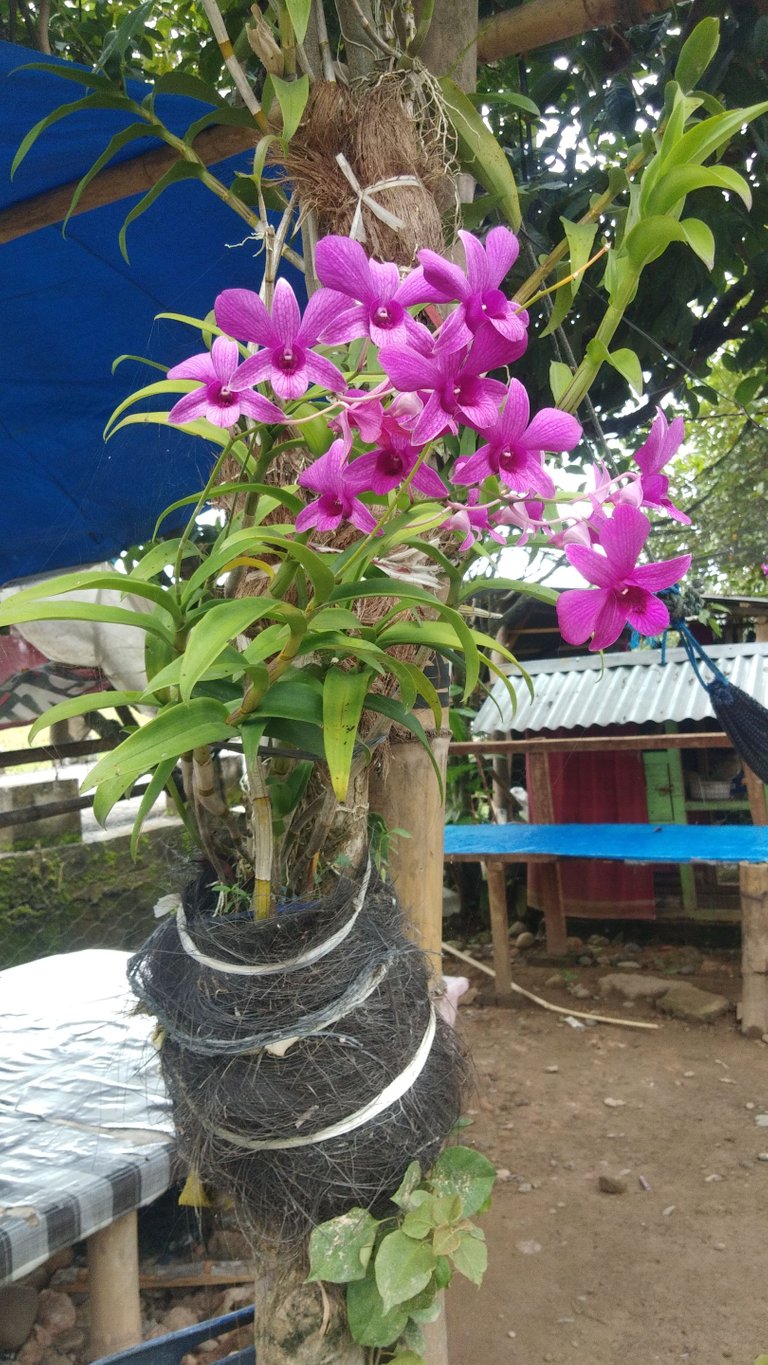
Purple Orchid
Purple orchids or in scientific language called Dendrobium Orchids, these orchids are very popular among all people who are fond of orchids, from beginners to orchid collectors.
In plain view, this purple orchid is easily recognized from the shape of its fat stem. In terms of taxonomy, the bulbous type of orchid plant is called a pseudobulb. For this type of orchid, it is native to the territory of Indonesia.
Purple orchids are mostly found to be epiphytic or living attached to trees, because Indonesia has a tropical climate and is rich in tropical rain forests, this orchid thrives in the forest.
Conditions like this can also be referred to as agro-climax where the potential for this orchid plant to grow and develop is very large.
Purple orchids grow to spread to South Asia, India and Sri Lanka. In East Asia Dendrobium is widely cultivated by the Japanese, Taiwanese and Korean people. while in Southeast Asia this orchid is a mainstay for Thailand, Indonesia and the Philippines. This orchid mostly grows wild in the tropics, but there are also these orchids found in small numbers in the southern United States and British colonies.
In Indonesia, it is usually known as the king of purple orchids. In Papua (Indonesia) there are 450 species of orchids and in Kalimantan (Indonesia) there are 150 orchids.
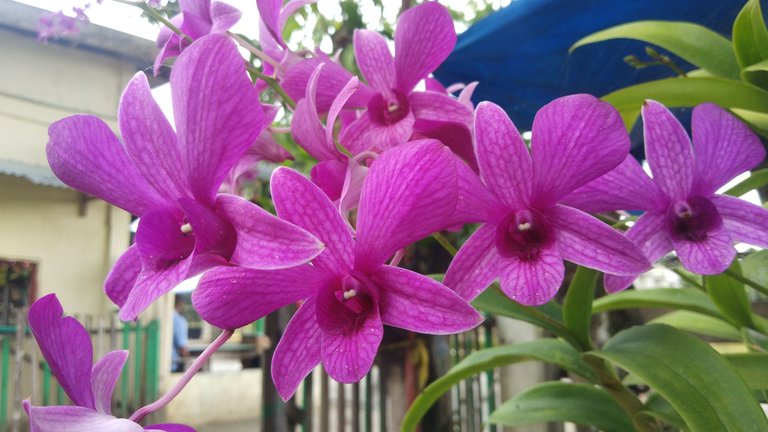
Purple orchids are a popular type of orchid here, as they are easy to care for and highly adaptable to new environments. Therefore, we are not surprised that the purple orchid is an orchid that is recommended for fans who are still beginners. Only with care as is even though these orchids can grow and flower to the maximum. One more thing that becomes fun in collecting purple orchids is the opportunity to multiply plants easily, which is enough to break the clumps from a large group or from a keiki. Clumping can be done by splitting technique with sharp and sterile tools. Splitting ideally involves 2 to 4 stems in one new plant. In addition to the splitting technique, the purple orchid plant can be propagated by a fertilization system. The fertilization system (cross) can also produce new types of orchids.
here is a picture of a purple orchid, which I captured on my smartphone about a month ago, where this orchid grows attached to a tree in a house belonging to a friend of mine.
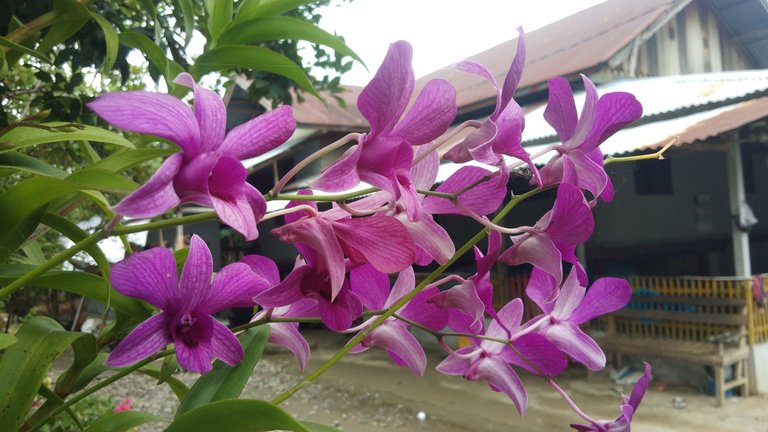
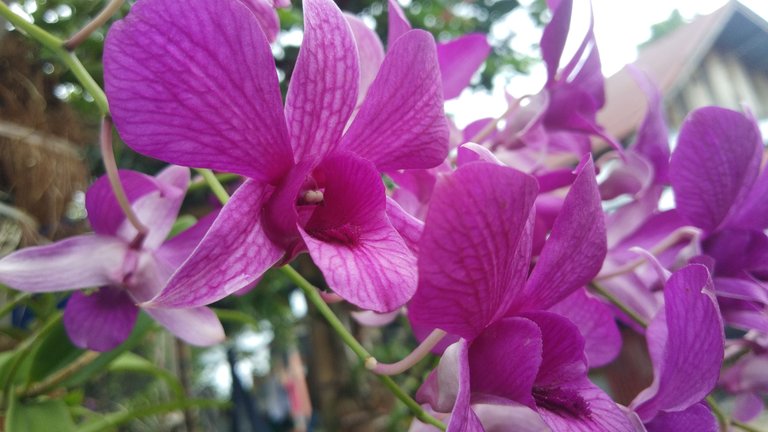
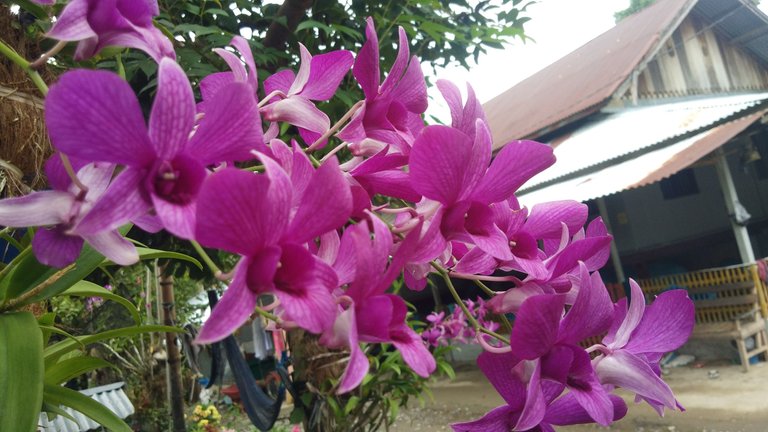
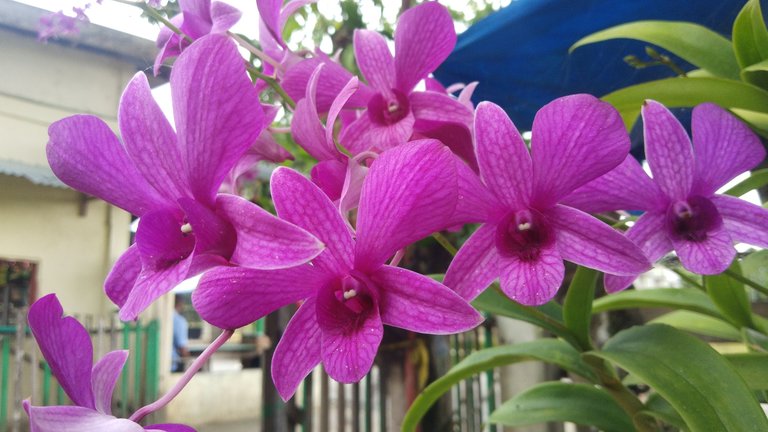
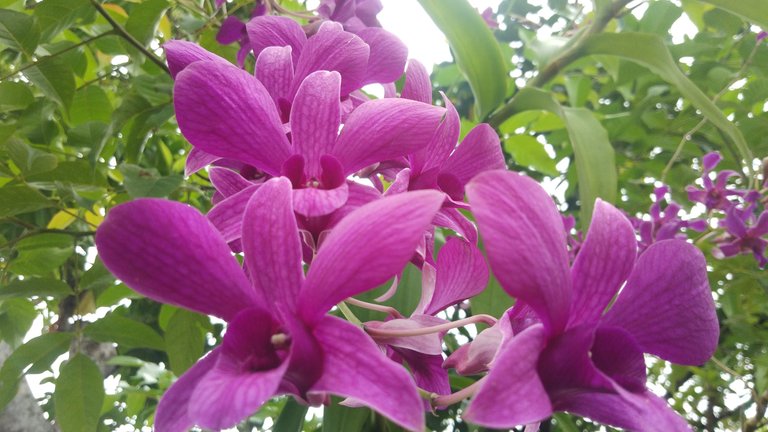
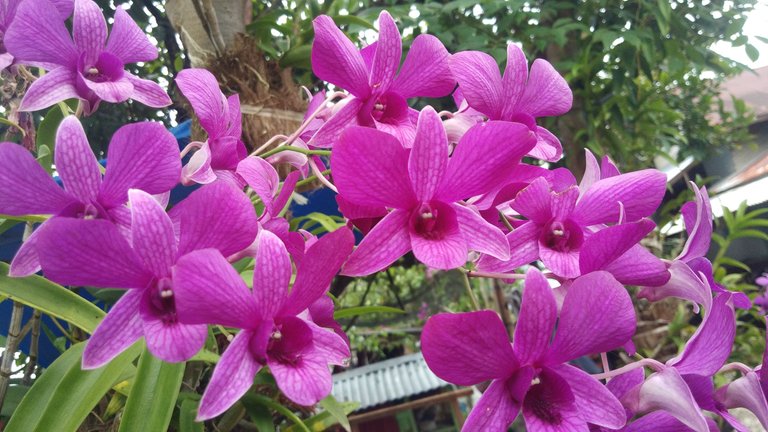
Alright, that's enough from me, I hope I can add insight to all readers, and I ask for support so that I can be more active in sharing my knowledge, see you at the next meeting